Another lost painting medium before Pictura Translucida was a painting system called "cera colla", which is ammonia and wax emulsified wax paint. This was the standard water based ancient permanent paint. Bees wax from the "Honey Mountain" in Greece emulsified with ammonia from the city of Ammonium, in Egypt. The Egyptian's painted their walls with it for centuries, buff it up and it would radiate reflecting light, passageways would glow with this ammonia and water based wax paint.
Ammonia, NH<sub>3</sub>, is a compound of nitrogen and hydrogen, a water soluble gas.
Ammoniac, a salt and gum found in the Qattara Depression 200 miles East of Memphis, Egypt. Ammoniac is the remains of a long extinct insect that lived in the area.
Ammonium, is the Egyptian city founded about 500 B/C, as a shrine to their god Ammon. Ammonium is also NH<sub>4</sub>, a radical that plays the part of a metal in the compound formed when ammonia reacts with acids, ammonium salts are alkaline.
Ammonium hydroxide, basic NH<sub>4</sub>OH is a weak alkali.
Carbonate, a salt of carbonic acid, as calcium carbonate or ammonium carbonate, made by mixing the ammonium alkali with carbonic acid. H<sub>2</sub>C0<sub>3</sub> is formed when carbon dioxide dissolves in water.
HOW TO MAKE CERA COLLA Ammonium carbonate or ammonium hydroxide is common ammonia water found at Ace Hardware, dilute it 1:1 with water. Heat it to where it is just starting to boil before you pour it into the melted wax. The ammonia water and wax should be mixed 1:1. Never boil the wax. Don't stop stirring until it's cool.
The mixture will expand 10 times larger as it effervesces. Keep stirring it until the reaction subsides and remove it from the heat. Keep stirring for seven more minutes as it cools down. It will become more viscus and finally It should be as smooth and creamy as whipped cream.
The pan should be easy to clean out with soap and water, it it isn't you have a problem, and made it wrong.
You can make a more soupy paint consistency by adding more water and ammonia in the first stage.
I like a harder storage consistency that I can remove from the storage container. Thin it with my brush and water and use my dry pigments to make an artist's paint. As in any medium, brush constancy is always important.
TIP: Make the consistency you want with the amount of liquid you add to the melted wax, not after it sets. 1:1 is a good storage consistency, 1:2 is more like a heavy paint, 1:20 is probably what my brush takes it down to.
The first photo is melting beeswax in a thick pot, being heated on a gas stove. The pot is in an aluminum pie tin with water in it. That will keep the temp from getting too hot.
2nd photo is of ammonia and water added at room temperature. It clumped the wax and made a bad mix, don't reuse the wax.
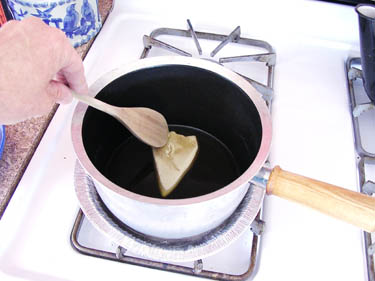
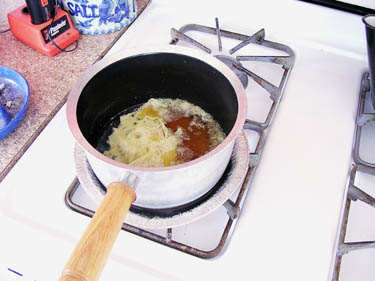
3rd is the way it should look expanded, while the effervescence is happening.
4th is the mass shrinking.
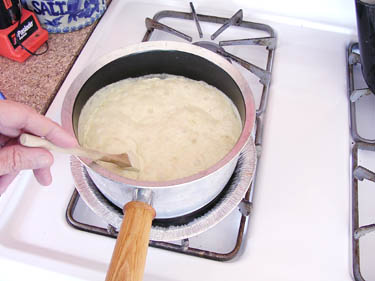
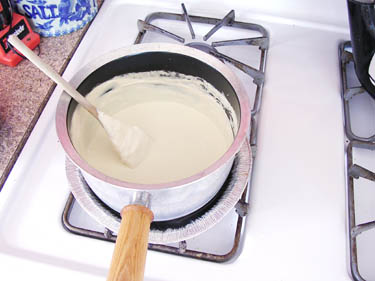
Cool Creamy Cera Colla.
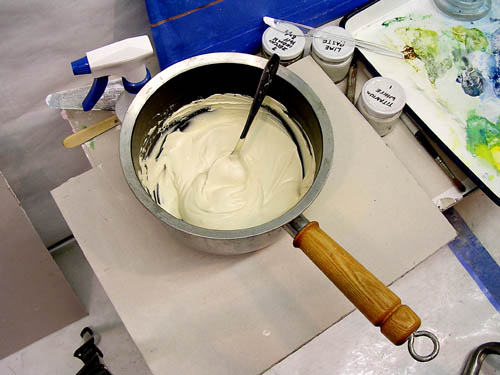
As long as we keep it this wet or wetter it will store for a very long time. It won't re-wet or dissolve in water because it will have turned back into wax again, along with any pigment mixed in.
A/D 700 CONSTANTINOPLE, The Lucca Manuscript describes some little known forms of art, one called
http://www.realcolorwheel.com/picturatranslucida.htmPICTURATRANSLUCIDA - Transparent Painting on shiny tin
At this time when artists were making paintings more beautiful then ever seen today. They had not only a complete opaque palette, but a compleat transparent palette as well. By todays standards the colors were not as permanent as todays pigments though. They made a halo or face glow by adding reflectance to the surface support.
Giotto 1300, Italy, added a little cherry gum to the cera colla and the Byzantines added a little "milk of fig". This is the ancient "cera colla' paint of the Dark Ages.
Later Byzantine's used just the wax, mastic and turpentine. Egypt continued on with cera colla. This newer technique continued on with the Romans. Water based Cera colla and Egypt lost that battle in the Paint Wars as mastic will loose to oil. Today, the two that will last the longest will be the first and last media, fresco on lime and acrylic on anything. You can follow the
Paint Wars in the main course link. By searching for the term 'Paint Wars'.
This will be the early Egyptian water soluble wax soap emulsion for pigments, it will mix with casein, gum, glue, egg, gelatin, turpentine, resin, balsam, shellac or oil. The volatile ammonia alkali dissipates while drying and the soap dries insoluble to water, like it was before you started. Put a cap on the container and it will store for a very long time. Grind your store bought dry pigments into it as you need them.
Giotto added a little cherry gum to the mix and the Byzantine's added a little "milk of fig". This is the ancient "cera colla' paint of the Dark Ages.
I would like to attribute the discovery of this medium to Egypt and their god Ammon not to Byzantium. They both used the medium a lot but all works were destroyed in in the Iconoclastic Movement.
Potassium carbonate or caustic lye soda, is obtained in the impure form from wood ashes, potash [+IUM], are all the same alkali. It will also emulsify wax, but it will remain soluble in water, hygroscopic.
Other mediums Gotto talked about in the Lucca Manuscript were; stic-lac and borax mixed, this made an India water based paint. Gilding gums, alum, as used in dyeing, egg and wax emulsions, and the exceptional Chios resin paintings.
None of the paintings of this time survived. Heraclius also wrote about art at this time, he wrote about oil paints, and egg white plus alum, for miniature painting.
I think the Egyptian Fayian Grave paintings were done with cera colla, not the encaustic hot wax method attributed to them. It's so much easier and faster even if you have all the hot tool shapes.
Here is an example of cera colla, the wax paint from the time of the Dark Ages.
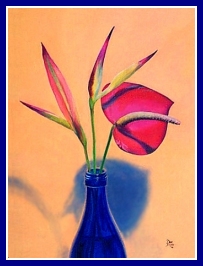
Cera Colla 01, 5.5x7.5
Well here it is 5 years later, 09-20-04, and I'm going to do my second cera colla. In the meantime I learned
Buon Fresco White Orchard Green GlassI'm going to really give this medium a workout, thick to thin, painted on dry and wet. Scraped, stamped and heat added, it will be fired upon.
I just painted in the background and knifed in parts, I'm letting it dry now.
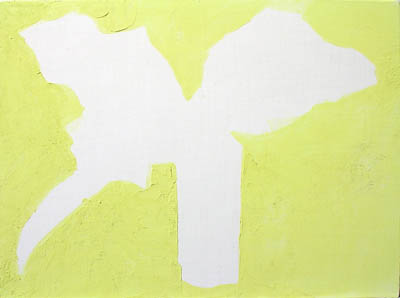
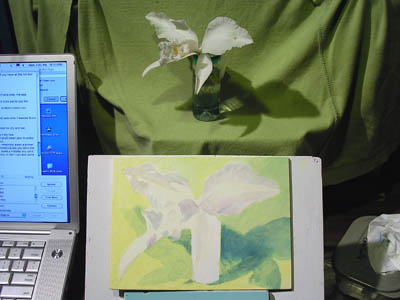
Ammonia water will keep very thin layers going on dry paint and will clean your brushes.
Put some medium on the palette and cover it so it won't dry out.
Since thin layers paint so well on the background I gave all the remaining areas a primer layer of thin medium. And then the whole painting another layer

Ammonia lets you work into then and get fine graduations.
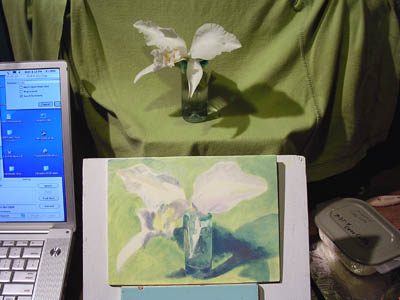
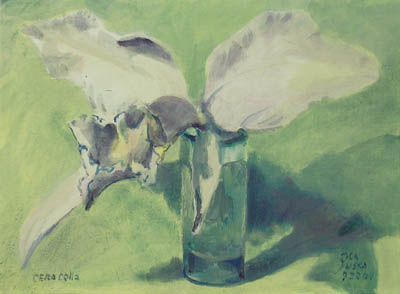
This is a very easy media, you can't make a mistake you can't fix. The paint is always flowing. I can work into it like with the finest mastics. In fact I can add some mastic to it if I want, this water/wax based media can take it. I don't know if I want too yet or not, but I'll have to try it.
It seems like there is a working time of maybe an hour. That's when nothing moves. But you can still scrape! Two hours later I could stain but not move the under layer.
Use lot's of medium in you're paint, but it shouldn't dry lighter.
I gave it another layer of medium and had supper. 8:24,
Now I'm painting with just ammonia and pigment on the base, it's just like working in the colors in fresco.
I held my lighter over an area on the left bottom, it got darker as the wax became shinny and exposed the lower layers.
I added some damar varnish to the cera colla to paint the edges, it mixed well and stayed water soluble but disengaged as I applied wet strokes over dry strokes. I'm not going to bother taking the emulsion to the oil side, it works fine with water, ammonia water works best.
I finished the little cera colla and set it aside to dry. In the morning it was still fragile so I put it in the sun to melt and solidify it.
It sat in the sun for 5 hours and the wax was soft. I dipped the whole panel in water and rubbed it down with my fingers, then a soft rag and water. It does glow, I have a permanent painting that will not change colors ever, only wax can say that, acrylics will probably past the time test too. This is a perfect medium for an out of reach location in a home. It can take the outside, it melts, feels and protects like wax. Today, there are trace remains of colored wax on the Trojan Column in Rome.
Ok! I got it.. First put down a layer of cera colla or two and let them set. Lay another layer and paint on the wet layer with pigment and ammonia water. You can always add another layer of cera colla. On top of the pigment layer paint on two more cera colla layers. Make it as thick as you want, it won't crack. The sun or a warm day will farther fuse it. Time is waxes friend.
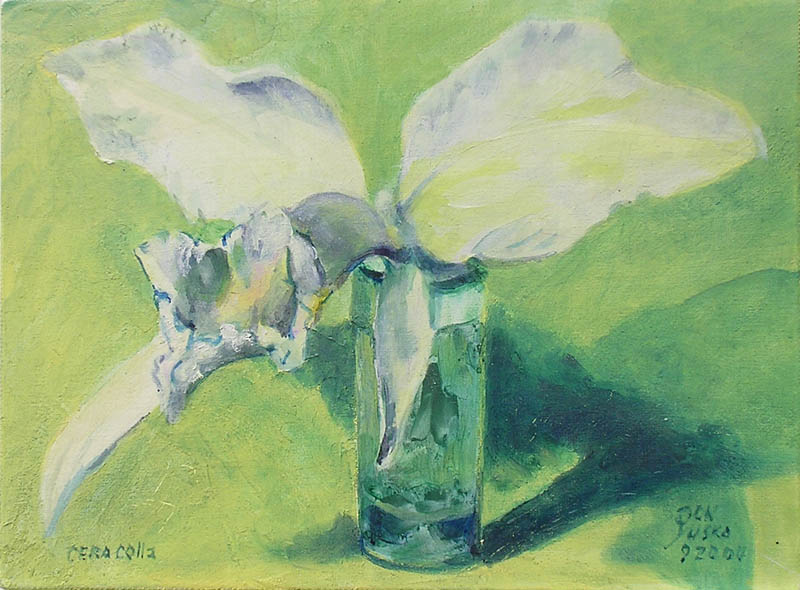
Ready to paint another cera colla. Start looking for a subject. 09-21-04, 2:36 PM.
3:00. Troweled on the cera colla just like an intonaco for fresco and put it out in the sun.
I found the subject, 2 EGGPLANTS AND A LIME. Purple and yellow-green are complements.
5:00, I'm going to wait until I need to turn the lights on so I'll have constant lighting.
HA.. the next morning I started.
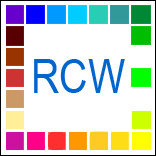
 Home
Home

 Help
Help

 Search
Search

 Login
Login

 Register
Register

 Broadcast Message to Admin(s)
Broadcast Message to Admin(s)

 « Home
« Home  ‹ Board
‹ Board  Top of this page
Top of this page 
 Pages: 1
Pages: 1

